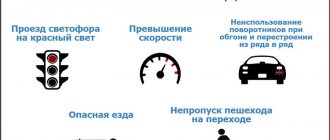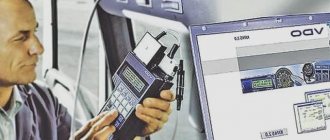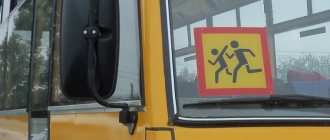All drivers are well aware that vehicle maintenance is part of its operation. However, there is still a category of car owners who believe that no one needs a scheduled vehicle inspection with the replacement of spare parts recommended by the manufacturer and that it is simply a waste of money.
Is it really? What is scheduled maintenance? What is it like? What does it include and how often should it be done for different car brands? Is it necessary to do this at all? Experts answer questions, express their opinions and give advice.
So. Why carry out routine maintenance?
First of all, you need to understand that car maintenance itself is a preventive measure that is aimed at preventing possible problems in the early stages. Those who believe that waiting for a part to fail and then replacing it will be more economical than undergoing scheduled maintenance are deeply mistaken. Any car service center will confirm that car repairs are much more expensive. And even if you have a new car of a global brand, the laws of physics work on its units in the same way as on cars with high mileage, so even a small error in operation or a malfunction identified during diagnostics allows you to avoid serious breakdowns or even accidents.
Moreover, unlike cars of previous generations, a modern car is a complex of complex units controlled by electronics, so it cannot be done without computer diagnostics and other measures.
Types of car maintenance
The volume and content of operations included in car maintenance are determined by the make and model of the car, as well as factors such as current mileage, seasonality and reaching a certain shelf life if the car has not been used during this period.
Particular importance was attached to compliance with maintenance regulations in Soviet times, when, on the one hand, cars were not as sophisticated and reliable as they are now, and on the other hand, discipline in the operation of vehicles was maintained (especially in organizations).
The rule of inspecting a vehicle before leaving for a trip and eliminating any identified deficiencies is mandatory for every driver and vehicle. And such a requirement, especially for trucks and buses, is completely justified: transportation of people and large cargo requires increased safety measures.
The classification of types of maintenance in Russia has been preserved since Soviet times in the “Planned and preventive system of vehicle maintenance” and includes the following main positions:
- daily vehicle maintenance;
- first vehicle maintenance – TO-1;
- second vehicle maintenance – TO-2;
- seasonal vehicle maintenance.
Manufacturers of modern passenger cars have somewhat modified the numbering and frequency of maintenance:
- The numbering according to the classification of TO-2, carried out, as a rule, at equal intervals of time, has become continuous: from TO-1 to TO-10 or even TO-12.
- For a number of passenger car manufacturers, the need to carry out maintenance according to the TO-1 classification has disappeared, and for some, this operation remains with the code name TO-0.
That is, for passenger cars, the types and numbering of maintenance may look like this:
- daily maintenance;
- zero maintenance – TO-0;
- periodic maintenance (numbered) – TO-1…TO-10 (TO-12);
- seasonal maintenance.
The maintenance schedule, service intervals and content of operations for each type of maintenance are determined by the vehicle manufacturer and are indicated in the service book.
For TO-0 (TO-1 according to the generally accepted classification), the upper mileage limit is, as a rule, 2-2.5 thousand km. Service intervals between subsequent maintenance usually range from 10 to 20 thousand km.
Daily vehicle maintenance
Daily maintenance - ETO (for passenger cars, rather, an inspection before a trip) involves control and inspection operations of the main components and assemblies of the car, primarily those that affect safety on the road. In this case they check:
- inspection - presence of leaks in the brake system, power steering, engine (coolant, engine oil), transmission;
- inspection - fluid levels in tanks and crankcases of main components and assemblies. If necessary, top up;
- inspection and testing - operation of electrical equipment, gauges and dashboard indicators;
- inspection - the condition of the tires. If necessary, inflate (see tire pressure tables);
- testing - starting the engine, testing when starting the brakes, steering, clutch, gearbox.
First maintenance
The first maintenance of TO-1 includes operations included in daily maintenance, as well as additionally the following work:
- body wash, interior cleaning;
- control, diagnostic and inspection work (in addition to ETO inspection): checking the effectiveness of braking, parking brake, brake drive, free play of the steering wheel, clearances of the steering mechanism, protective covers of chassis parts, checking the condition of springs, levers, rods and suspension struts, free movement of clutch and brake pedals, tension of drive belts of engine attachments;
- adjustment work: free play of pedals, tension of drive belts, parking brake, free play of steering wheel, clearance of steering drive connections, carburetor (for carburetor engines);
- fastening (check and tighten if necessary): mounting the engine, gearbox, steering mechanism, steering rods, swing arms, wheel rims, exhaust system parts, brake mountings;
- refueling stations: changing the engine oil (with replacing the oil filter);
- electrical: checking and, if necessary, cleaning the battery and electrical equipment from dust and dirt, checking the condition of insulation, replacing, if necessary, burnt-out lamps or fuses.
Second maintenance
The second technical maintenance - TO-2 includes operations included in TO-1, as well as additional work on in-depth diagnostics of the main systems, components and assemblies of the vehicle.
In addition to a larger volume of control and diagnostic work during TO-2, more refueling operations occur. In addition to changing the engine oil, depending on the mileage or storage period, the following changes:
- Coolant,
- Brake fluid,
- Gearbox oil
- Oil in the hydraulic system,
- Axle oil (for trucks and passenger all-wheel drive vehicles).
For a given mileage, TO-2 regulates the mandatory replacement of certain elements. For passenger cars this is:
- Fuel filters,
- Air filters,
- Cabin filters,
- Transmission filter (if it is automatic),
- Spark plug,
- Timing belt and rollers (if timing belt drive) and additional equipment.
How much does maintenance cost and can you save money on it?
Obviously, a technically trained car owner can carry out some types of work independently. In this case, a maintenance schedule must still be drawn up and if necessary, for example, computer diagnostics of systems or other complex activities, you should contact a car service center.
All this is true for cars with high mileage. But if it is necessary to maintain the warranty of a showroom car, you cannot do without contacting authorized auto centers and undergoing maintenance there with the appropriate marks in the service books. You can save money only if the service allows you to undergo maintenance with its consumables.
In addition, you need to understand that prices for maintenance at authorized car services, even within the same official dealer, can vary greatly. This also applies to the materials they use. Practice shows that if you are not lazy, call different services and compare prices, you can save up to 20% on work and up to 50% on materials.
The conclusion is simple. Scheduled maintenance is necessary, you can try to save money on them, but you absolutely cannot risk your car and ignore them!
What is needed to pass MOT?
- PTS;
- Citizen's identity card, for example a driver's license, foreign passport, passport of a citizen of the Russian Federation;
- Power of attorney. It is used only if a trusted person gives it for technical inspection;
- STS.
First aid kit
First aid kits will be inspected during the inspection. Now the medicine box contains fewer medications. What should be in the first aid kit?
- Non-sterile gauze bandages;
- Gauze napkins;
- Sterile dressing bags;
- Sterile gauze bandages;
- Adhesive plasters.
To provide first aid you will need scissors, gloves and tourniquets. However, this list does not limit a citizen from transporting other medicines. If the driver suffers from any chronic diseases, then just in case you need to have medications for nausea and headaches.
Fire extinguisher
An annual inspection involves an inspection with opening and checking of filters. The employee checks:
- Seal on the safety device;
- Serviceability of the pressure gauge;
- Spray for contamination and corrosion;
- The presence of a mark and pressure inside the cylinder;
- Condition of the protective coating.
The flexible hose is also checked and the weight of the fire extinguisher is measured. At the end of the procedure, marks are placed in the passport, and the device is entered into the accounting journal. If the fire extinguisher is found to be inoperative, it must be recharged or disposed of.
Is it possible to save money on car maintenance?
Maintenance (except ETO) is a paid procedure and many car enthusiasts ask the question: “Is it possible to skip it altogether, thus saving money?” In addition, manufacturers of modern cars claim that their quality and reliability are increasing, while service intervals are also increasing.
This question has two sides: formal and factual.
- Formally, if we are talking about a new car, the absence of a maintenance mark completely deprives the owner of the right to warranty service.
- In fact, service intervals have remained virtually unchanged over the past 15-20 years, and even world-famous automakers have not yet created a completely maintenance-free car.
This means that periodic maintenance is necessary not only for new cars, but also, even to a greater extent, for used cars.
It is not only possible, but also necessary to save on undergoing specific maintenance. At the same time, it is important what period of operation the car is in: warranty (manufacturer’s warranty) or post-warranty.
If the machine is under warranty, then you need to read the corresponding paragraph of the service book about the manufacturer’s warranty obligations. The vast majority of automakers indicate that one of the conditions for maintaining a warranty is undergoing maintenance at authorized dealerships (known for high prices for their services). And although this issue is more than controversial, the bulk of motorists obey this requirement.
Savings when undergoing maintenance during the warranty period are possible by choosing a dealership that offers cheaper services and by purchasing materials for maintenance from a third-party store (sometimes this is half the price than from the dealer, but the provision of your own materials must be agreed upon in advance ).
In addition, you should pay attention to the list of maintenance operations in the preliminary calculation. Sometimes the dealer includes work there that is not provided for by the manufacturer (this is easy to check - using the same service book).
If the car is out of warranty, the opportunities to save on maintenance become wider. The fact is that a number of maintenance operations can be performed independently (no special qualifications are required here): changing the oil and oil filter, air and fuel filters, spark plugs, brake pads, and wheel assemblies.
More complex operations (for example, replacing a timing belt) can be performed at independent auto repair shops with a good reputation. As a rule, the services of such services are significantly cheaper than those from official dealers.










